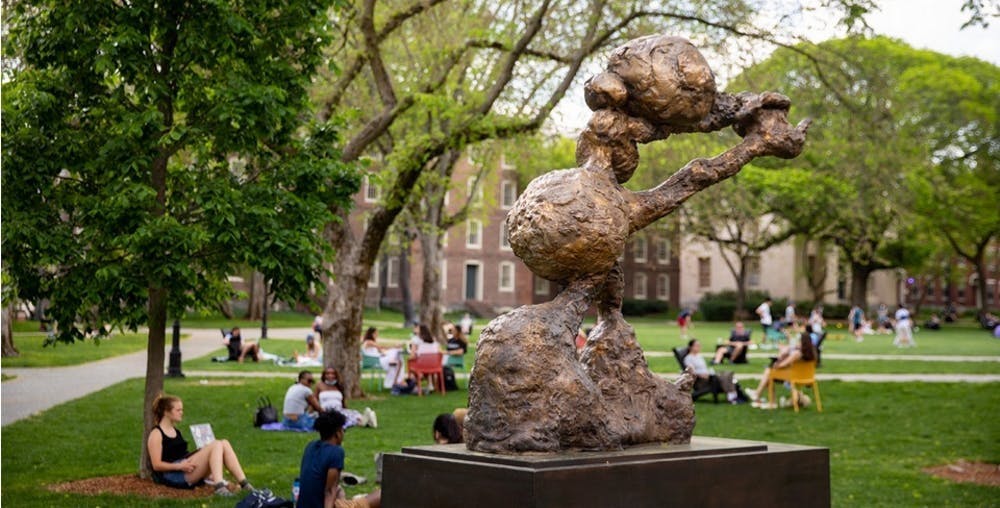One of the values of public art on campus, according to Brown, is that it “contributes to a sense of place, and inspires identification with this institution, its history and its values.” But the “Large Concretised Monument to the Twentieth Century” on the Main Green, installed May 14, is achieving the opposite effect: rather than helping students identify with the University, it instead leaves some of us feeling alienated from it.
To be clear, art doesn’t need to be straightforward, simplistic or easily interpretable for us to feel comfortable making it our own. But public art, in particular, should be accessible to the community on some level. With its inscrutable, ovoid protrusions, the “Monument” utterly defies comprehension. Maybe that’s the point. Or maybe the piece simply misses the mark.
Professor Dietrich Neumann, the chair of Brown’s Public Art Working Group, has stated that the new statue on the Green “presents a visceral, boisterous comment on the roles of gender, identity and the male gaze in the 20th century.” Really? Such an interpretation is surely lost on the average observer. The University’s statements about the new statue have felt comically pretentious at times — there comes a point where art fails to be subversive, and simply becomes confusing instead.
Of course, one might ask: Why are we making such a big deal about the ugly statue on the Main Green? Can’t we just ignore it, speed past it as we go to class?
We can — but we shouldn’t have to.
At Brown, an eight-member Public Art Working Group is charged with making decisions around installations on campus. Members of the group include art faculty and staff, facilities staff and a graduate student. Conspicuously missing from this group is any undergraduate representation. We understand that our opinions are not the only ones that matter, but they do still matter. What if the Public Art Working Group included our voices? What would it have chosen? Would it have been the “Large Concretised Monument to the Twentieth Century”? Probably not.
To be fair, the Public Art Working Group seems to be aware of how students might respond to the new statue. Professor Neumann has recognized that, “Maybe at first, students can be really indignant about how terrible it looks, and maybe they realize that there’s something more to it than what meets the eye.” He also notes that Blueno, a beloved campus figure, was once vilified as well.
These are fair points, but we are skeptical that this new “monument” will ever really resonate with the community. While Blueno had its own fair share of controversy, it felt more approachable and accessible. It was, after all, a giant bear. And irrespective of the art itself, the process behind our public art matters, too. It should matter whether a sculpture is chosen by the community or chosen for the community.
If one of the stated goals of public art on campus is to make us identify with this institution, accessing the meaning of that artwork shouldn’t require insider knowledge. Perhaps some, or many, students will eventually come to love the “Large Concretised Monument to the Twentieth Century.” But for now, we are left with what feels like a large concretized monument to the pretentious, select and inaccessible.





